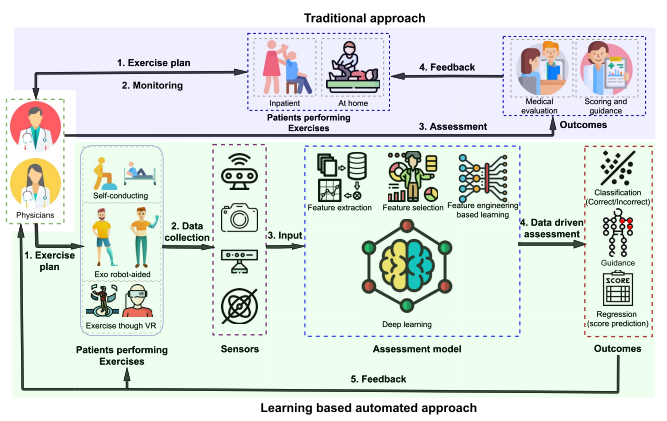AI-Driven Stroke Rehabilitation Systems and Assessment: A Systematic Review
Abstract
Post-stroke therapy restores lost skills. Traditionally, patients are supported by skilled therapists who monitor their progress and evaluate the program’s effectiveness. Due to a shortage of qualified therapists, rehabilitation facilities are both expensive and inadequate. Furthermore, evaluations may be subjective and prone to errors. These limitations motivate the researchers to devise automated systems with minimal human intervention, therapist-like assessment, and broader outreach. This article reviews seminal works from 2013 onwards, qualitatively and quantitatively adapting the PRISMA approach to examine the potential of robot-assisted, virtual reality-based rehabilitation and automated assessments through data-driven learning. Extensive experimentation on KIMORE and UIPRMD datasets reveal high agreement between automated methods and therapists. Our investigation shows that deep learning with spatio-temporal skeleton data and dynamic attention outperforms others, with an RMSE as low as 0.55. Fully automated rehabilitation is still in development, but, being an active research topic, it could hasten objective assessment and improve outreach.
Figure: A comparative overview between traditional vs automated post-stroke rehabilitation systems.
